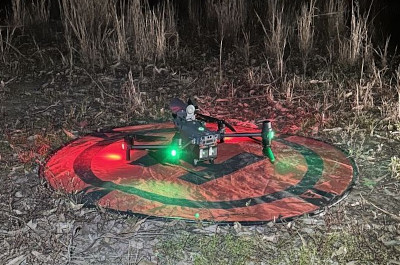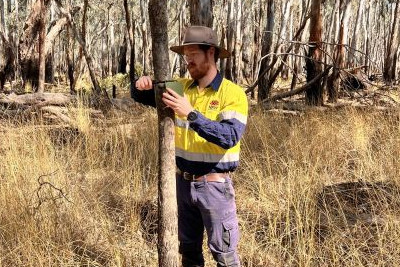Baseline survey
The koala baseline survey launched in 2022 as part of the NSW Koala Strategy and is scheduled to finish in 2026. It will provide the first baseline population dataset for koalas in New South Wales by surveying over 1,000 locations in national parks, state forests and private properties.
Establishing a baseline is critical for evaluating population trends and to contribute to identifying priority areas for koala conservation and management.
The baseline survey uses advanced monitoring methods, including heat-detecting drones and acoustic recorders, to evaluate koala distribution and gather data on occupancy patterns and population density.
Over 14 nights during the spring breeding season, passive acoustic recorders are deployed to record male vocalisations across sites known to be where koalas range. At a subset of these sites, drone surveys are conducted at night to count the number of koalas present.
Preliminary results are promising and show that 254 out of 994 acoustic recorders captured koala calls. Further, 450 sites were surveyed by drones and 82 of these 450 sites had koala detections.
A total of 286 koalas were detected from drone surveys. This data is being used to generate baseline results for the location and abundance of koalas across the state.
Priority population monitoring program
The koala priority population monitoring program started in 2023. It focuses on 20 priority koala populations, across New South Wales, identified in the NSW Koala Strategy.
The 20 priority populations overlap with recognised regions of significance for koalas and represent the known geographic range of koalas in New South Wales. By focusing on stronghold populations, this program will enhance our understanding of long-term occupancy trends and changes in koala distributions at both regional and statewide levels.
The program uses passive acoustic recorders to detect koala calls during the spring mating season and will assess environmental variables known to influence koala populations, including soil and vegetation type, land usage and soil composition to understand what drives patterns of koala occupancy in space and time.

